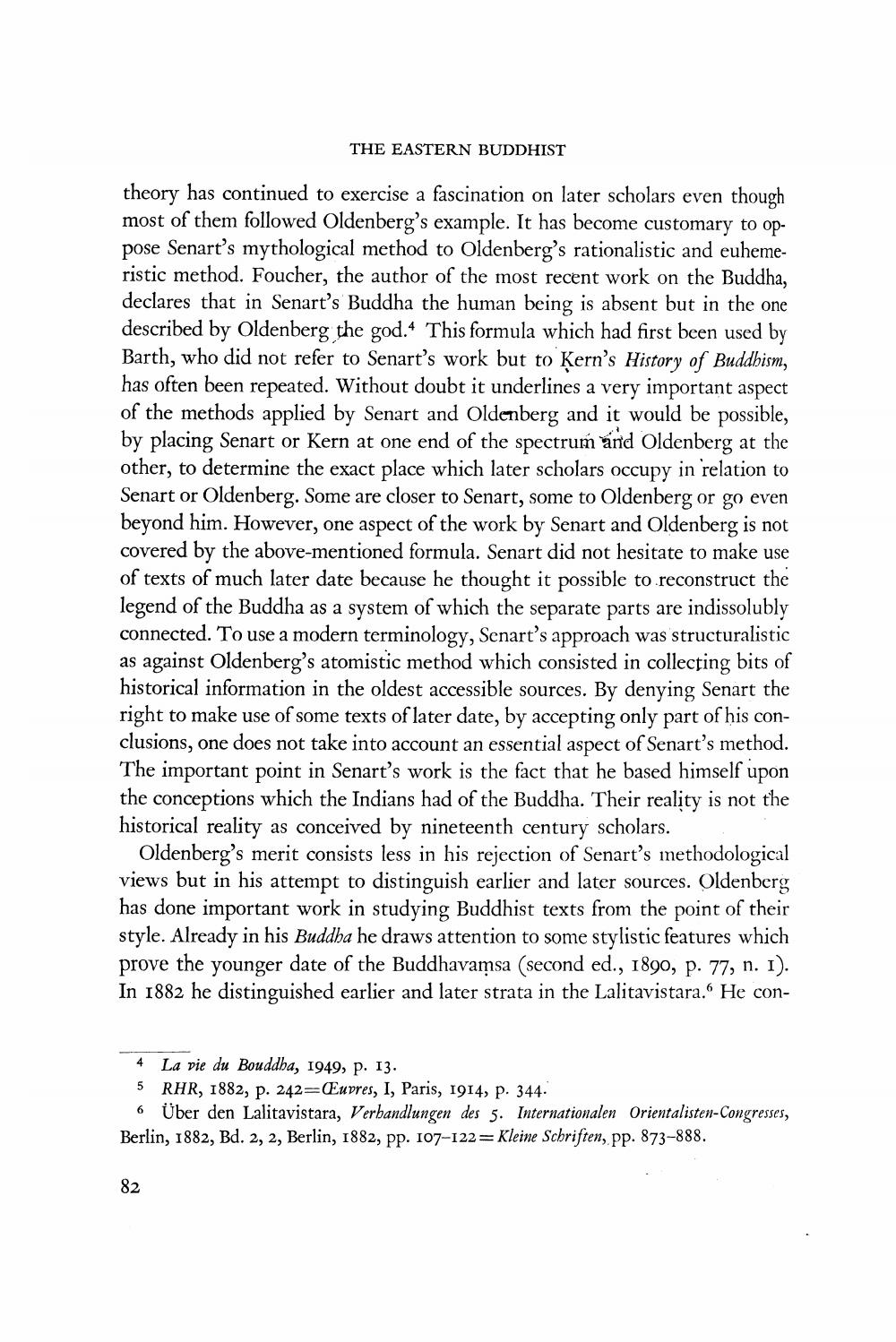________________
THE EASTERN BUDDHIST
theory has continued to exercise a fascination on later scholars even though most of them followed Oldenberg's example. It has become customary to oppose Senart's mythological method to Oldenberg's rationalistic and euhemeristic method. Foucher, the author of the most recent work on the Buddha, declares that in Senart's Buddha the human being is absent but in the one described by Oldenberg the god.* This formula which had first been used by Barth, who did not refer to Senart's work but to ķern's History of Buddhism, has often been repeated. Without doubt it underlines a very important aspect of the methods applied by Senart and Oldenberg and it would be possible, by placing Senart or Kern at one end of the spectrum and Oldenberg at the other, to determine the exact place which later scholars occupy in relation to Senart or Oldenberg. Some are closer to Senart, some to Oldenberg or go even beyond him. However, one aspect of the work by Senart and Oldenberg is not covered by the above-mentioned formula. Senart did not hesitate to make use of texts of much later date because he thought it possible to reconstruct the legend of the Buddha as a system of which the separate parts are indissolubly connected. To use a modern terminology, Senart's approach was structuralistic as against Oldenberg's atomistic method which consisted in collecting bits of historical information in the oldest accessible sources. By denying Senart the right to make use of some texts of later date, by accepting only part of his conclusions, one does not take into account an essential aspect of Senart's method. The important point in Senart's work is the fact that he based himself upon the conceptions which the Indians had of the Buddha. Their reality is not the historical reality as conceived by nineteenth century scholars.
Oldenberg's merit consists less in his rejection of Senart's methodological views but in his attempt to distinguish earlier and later sources. Oldenberg has done important work in studying Buddhist texts from the point of their style. Already in his Buddha he draws attention to some stylistic features which prove the younger date of the Buddhavamsa (second ed., 1890, p. 77, n. I). In 1882 he distinguished earlier and later strata in the Lalitavistara. He con
4 La vie du Bouddha, 1949, p. 13. 5 RHR, 1882, p. 242=CEuvres, I, Paris, 1914, p. 344.
6 Über den Lalitavistara, Verbandlungen des 5. Internationalen Orientalisten-Congresses, Berlin, 1882, Bd. 2, 2, Berlin, 1882, pp. 107–122= Kleine Schriften, pp. 873-888.
82




